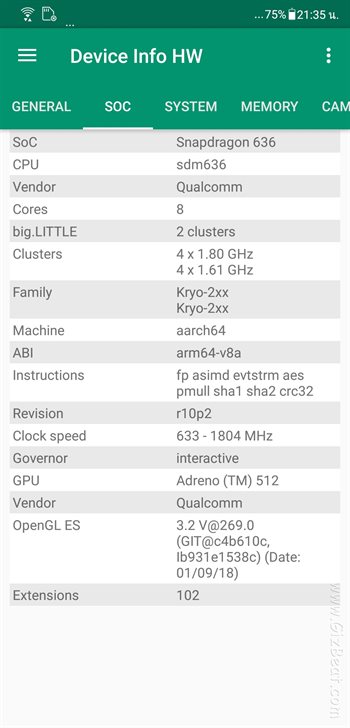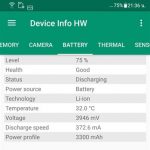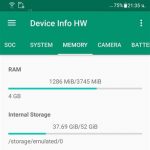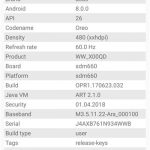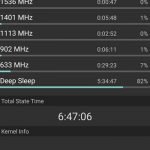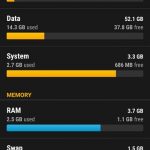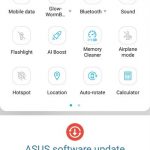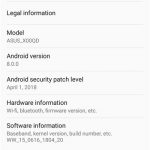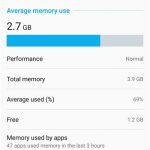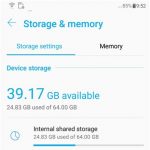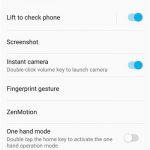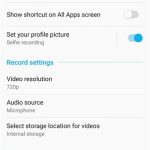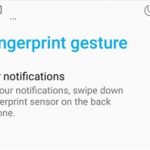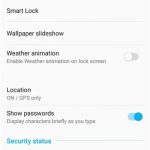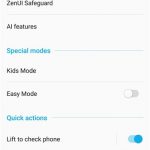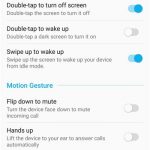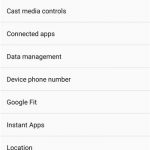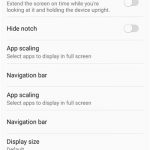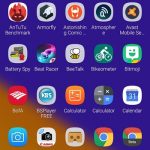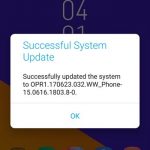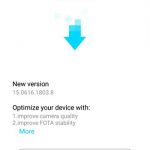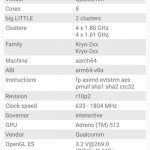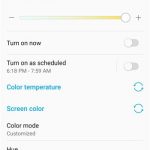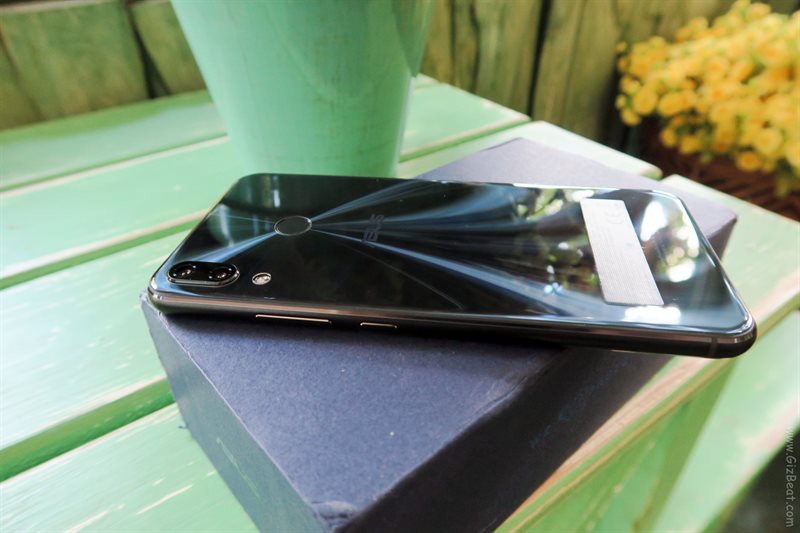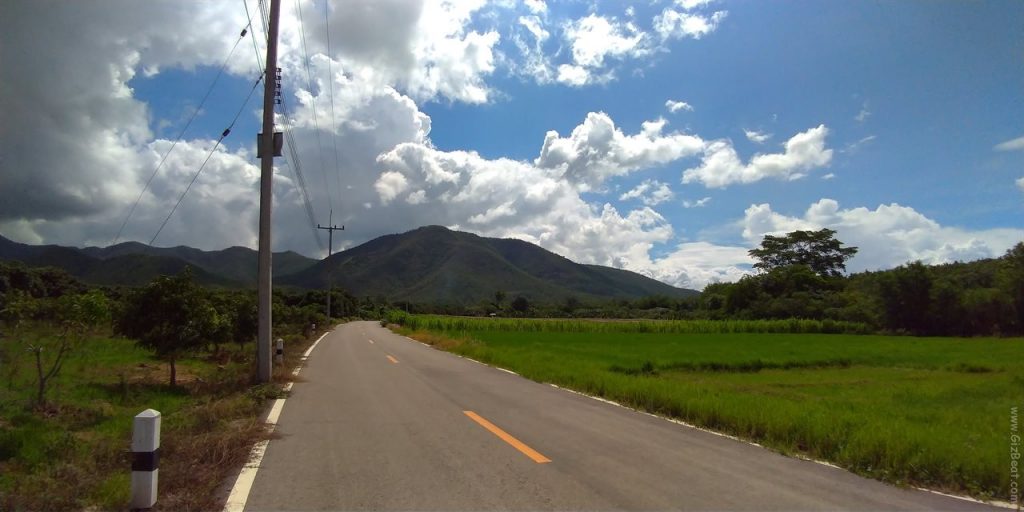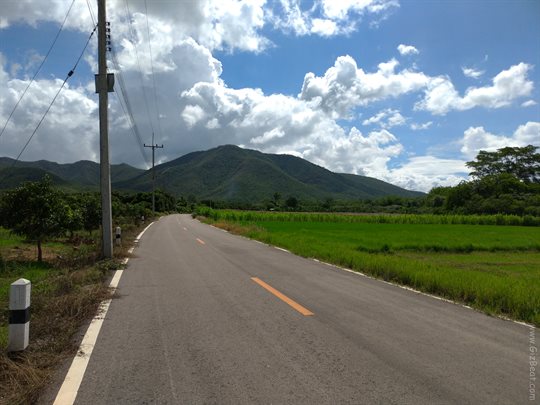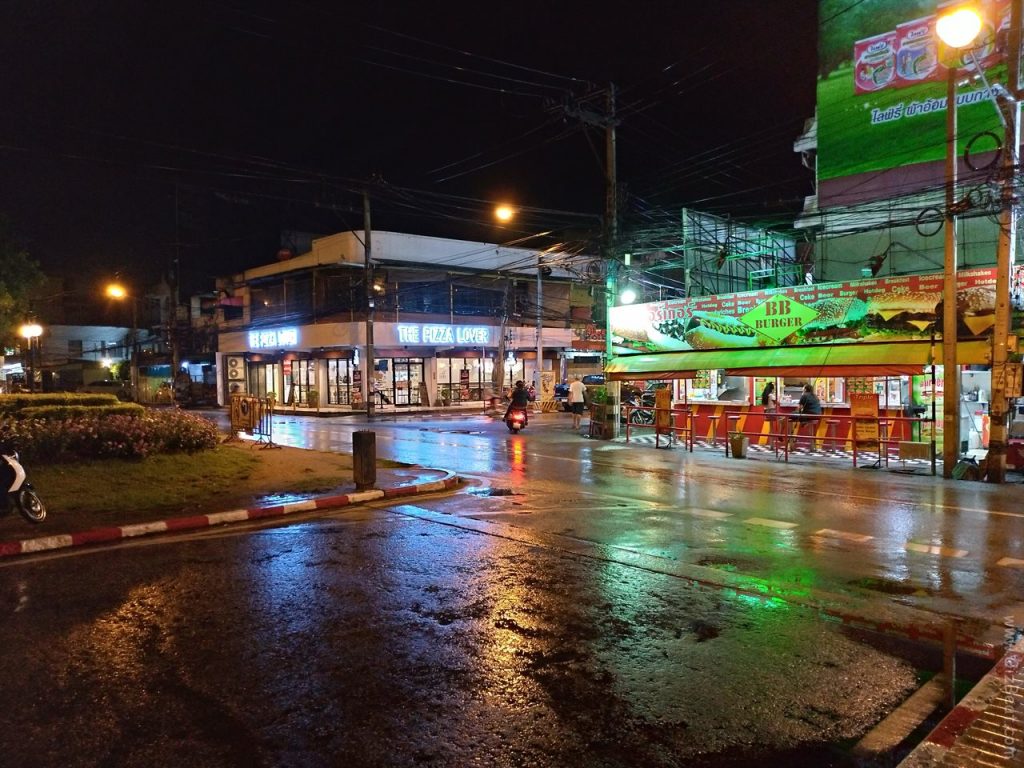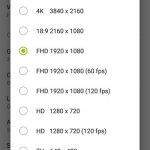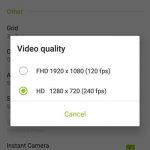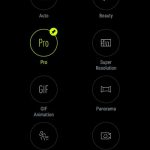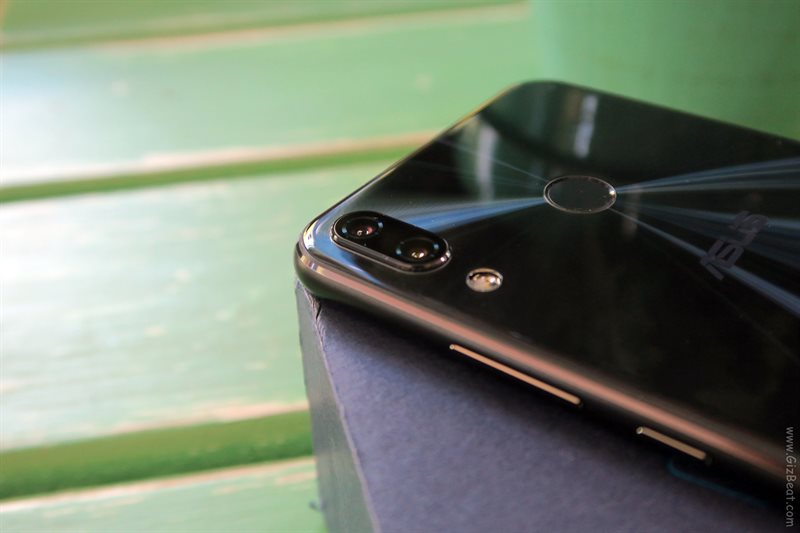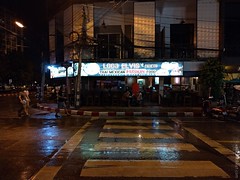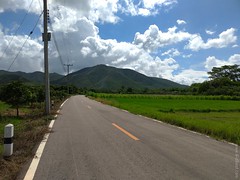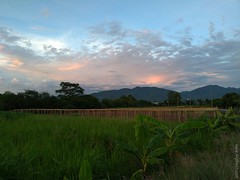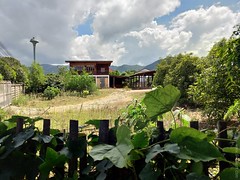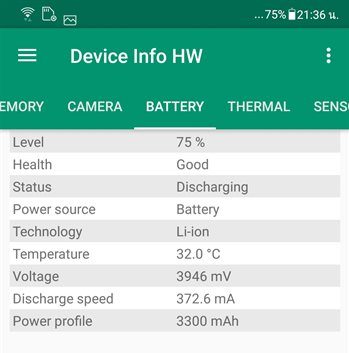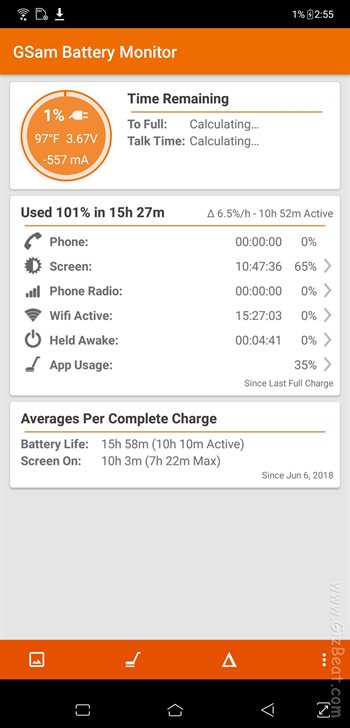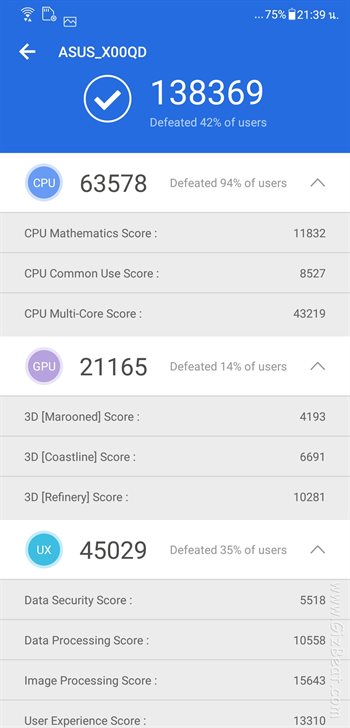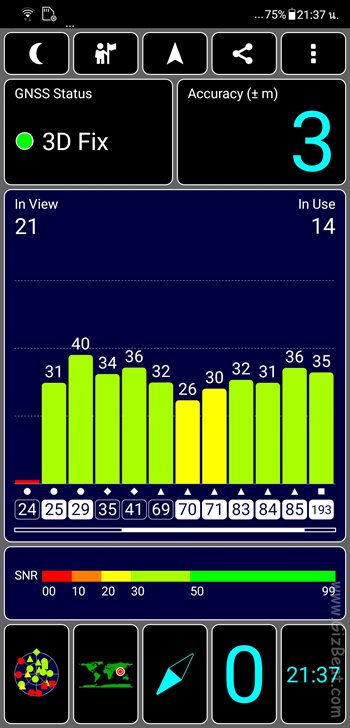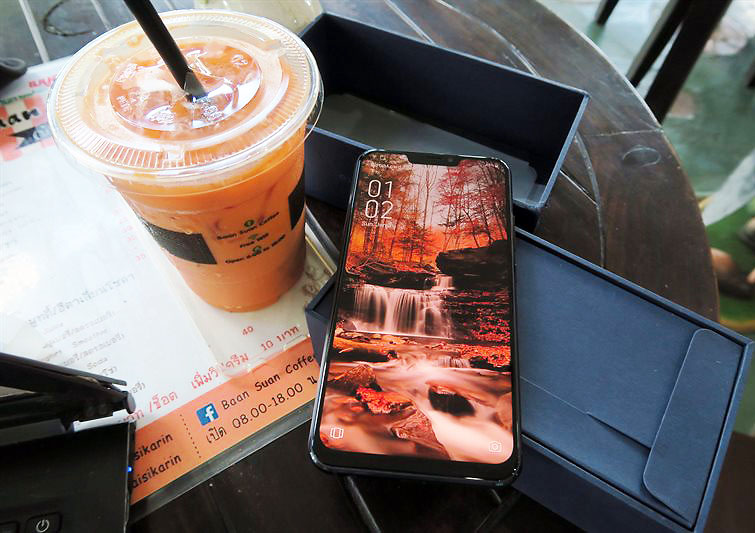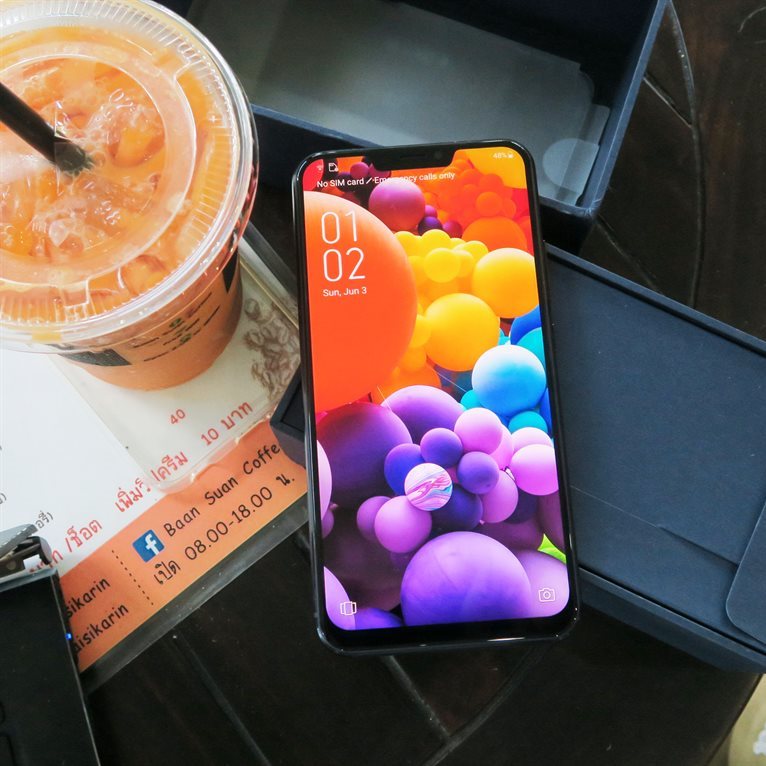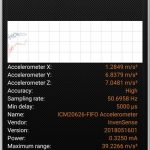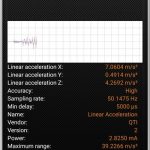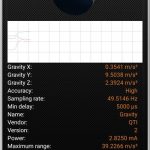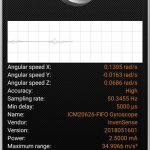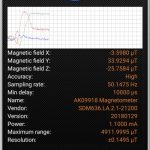Zenfone 5 ZE620KL and Zenfone 5Z ZS620KL are Asus’ latest flagship phones. Asus has a long history of releasing high spec phones at value prices. In this review we will look closely at ZE620KL so you can make an informed buying decision.
Wait, did you know you can get an additional 5% cashback from GizBeat on all GearBest purchases? (Click for details, opens in new tab)
The main difference between the ZE620KL and ZS620KL is the SoC, which is Snapdragon 636 in the ZE and Snapdragon 845 in the ZS.
Highlights of ZE620KL:
- Beautiful display
- Excellent audio with stereo sound in landscape view
- Very good cameras
- Powerful SoC
- Android 8.0
- Frequent OTA updates
- Accepts TF-SD expandable storage up to 2TB
- 100GB free Google storage for one year
Zenfone ZE620KL processor
ZE620KL uses one of Qualcomm’s latest SoC, Snapdragon 636. This is a powerful SoC with 8 Qualcbomm Kryo cores and Adreno 509.
Snapdragon 636 is powerful enough for everyone. You can easily play the latest 3D games at fast framerates and run Android 8 butter smooth.
- CPU:Qualcomm® Snapdragon™ 636 Mobile Platform with 14nm, 64-bit Octa-core Processor with AI BoostFinFET LPP (Low Power Plus) powersaving technology
- GPU:Qualcomm® Adreno™ 509
Zenfone ZE620KL system
The OS on Zenfone 5 is Android 8.0 overlayed by ZenUI. As usual for Asus, the OTA updates come very frequently, which is nice to see.
- Battery
- RAM
- System
- Deep sleep
- RAM ROM
- Quick tiles
- System info
- RAM usage
- ROM storage
- OTA
- Twin apps
- Advanced
- Simple mode
- Game streaming
- Security
- Advanced
- ZenMotion
- Settings
- Google settings
- Display
- App drawer
- Play Store
- OTA
- OTA
- Snap 636
- Customize display
Being Android 8, Zenfone 5 is Project Treble ready. It means that if you choose to unlock the bootloader you can quite easily flash any Project Treble ROM. The Android Treble GSI (Generic System Image) has been flashed successfully already on ZE620KL. Because of Treble, which makes it much easier for developers to create functional ROMs, I expect to see a lot of development work done for this phone. We should see a lot of custom ROMs coming soon.
Zenfone ZE620KL style
Zenfone 5 carries a beautiful glass back with an underlying shiny pattern that reflects light in awesome patterns.
There appears to be an oleophobic coating on both the front and back. Even though the back is glass I was impressed with how well it shunned fingerprints. I still recommend using the included clear skin, as the coating can have the phone slipping off of some surfaces if they’re at any sort of angle.
All around premium style, materials, and a rear glass + metallic finish give Zenfone 5 a unique look of superb fit and finish.
Zenfone ZE620KL cameras
ZE620KL has Sony’s IMX363 as it’s main camera. This camera sensor is 1/2.55″, 12.2MP, which gives it a pixel size of 1.40 μm. This means ZE620KL will do a better than aerage job in low light situations. The main camera’s lens gives us an 83° (25mm), which is the same as enthusiast compacts (typically 24mm). Pixel-peeping, I see the edges and corners are very sharp which means there’s little or no lens decentering and that Asus has used high-quality components for the camera module.
We tested indoor shots and they come out very bright with little noise. According to Asus this sensor is 5x more light sensitive compared with a typical camera with 16MP, F1.7 & 1.12µm pixel size.
In addition to the IMX363, Zenphone ZE620KL has a 120° (12mm) secondary camera. This helps us get extremely wide pictures. I pixel-peeped the secondary camera images and they aren’t at the same level of quality as the primary camera sharpness-wise, but image quality (IQ) is more than good enough for social media and even more importantly — color rendering looks just as good as the primary camera. Great for wide scene shots. Notice the almost identical colors and wide field of view difference in shot #2 vs #3
Overall the image quality is well above the average phone. Not quite at recent $1000 flagship levels but nobody will know the difference who isn’t pixel peeping very closely.
The cameras also have optical image stabilization (OIS). This helps us take pictures without handshake blur, and helps stabilize handshake when taking video.
- Video settings
- Slow motion
- Pro mode
- Camera settings
The bokeh/blur mode which uses the dual-cameras work very well on ZE620KL. I was impressed with how well it handled that mango shot — smooth, natural transition to bokeh and no artifacting.
Bokeh strength can be set before taking the picture, anywhere from very light bokeh to massive blur. Note this can only be set prior to taking the image, adjusting bokeh after the shot is taken is not possible but I’m hoping an update will add this feature.
Video can be recorded in 4K and it also has slow-mo 720P@240fps, 1080P@120fps, and Time Lapse Mode.
Both still images and video can be shot manually by adjusting ISO and shutterspeed. Notably, manual settings can actually be adjusted during video recording.
Generally speaking, when left in auto, indoor pictures and video are taken brighter than what our eyes see. That’s a good thing but if wanting to capture true-to-eye brightness of low-light scenes, it’s best to shoot in manual.
- 5x light sensitivity low light photos (compared with a typical camera with 16MP, F1.7 & 1.12µm pixel size)
- Sony flagship IMX363 12MP dual pixel image sensor – 1/2.55″ large sensor size, 1.4µm large pixel size
- F1.8 aperture, 24mm equivalent focal length in 35mm film camera, 83° field of view
- 0.03 seconds phase-detection autofocus (PDAF)
- 4-axis, 4 stops optical image stabilization (OIS)
- Pro (RAW file support / up to 32 seconds long exposure), Super Resolution (48MP), GIF Animation, Panorama, Time Lapse (with power saving mode)
- Wide-angle camera #2: 120° (200% wider than normal) wide-angle camera200% wider view for more friends and scenery in the frame
- Front camera: 8MP 84° field of view F2.0 aperture 24mm equivalent focal length in 35mm film camera
- 4K UHD (3840 by 2160) video at 30 fps for main rear camera
- 1080p FHD video recording at 30 / 60 fps, 720p HD video recording at 30 fps
- 3-axis electronic image stabilization (OIS) for rear camera video
- Slow Motion video (1080p at 120 fps / 720p at 240 fps)
All images, including the inline images above, are unedited other than resize.
As a reviewer, one thing I really appreciate is that Zenfone 5 meticulously documents what mode a picture was taken in. While it’s sometimes very obvious which images are HDR, which are bokeh, and which are normal shots, it’s not always the case that we know. It even differentiates whether an HDR image was taken in HDR-Auto or with HDR-On. This stuff may not be handy to the average user but photo enthusiasts and reviewers may find it interesting.
Zenfone ZE620KL battery and charging
We tested the battery charging and this phone charges fully in about 2 hours. It ships with 5V 2A but supports up to 9V 2A chargers if you want faster charging.
Asus claims the ZE620KL charges to 60% in only half an hour and indeed the ZE620KL makes good on that claim. This means you can charge it while eating or taking a shower and when you come back the phone will be more or less ready for a full day.
- 3300mAh with fast charging
- AI & scheduled charging for battery protection
- 5 minutes charge for 2 hours talk time
- 38 minutes charge to 60% capacity
- Up to 22 days 4G standby
- Up to 25 hours 3G talk time
- Up to 13 hours video playback
- Up to 17 hours Wi-Fi web browsing
Running my 720P / WiFi / YouTube / 140lux battery test the ZE620KL gave us just under 11 hours of screen on battery life. Also note there were about 4 hours of deep sleep in addition to the 11 hours screen on. Not a bad score at all and this result supports Asus’ battery life claims.
Zenfone ZE620KL audio and speaker
Sound quality and loudness are great. On par with some of the best I’ve heard. The speakers are dual 5-magnet speaker with dual NXP Smart AMP.
As with the Xiaomi Max 2, Zenfone 5 outputs the 2nd speaker through the earpiece at the top of the phone to give us a left and right channel. This speaker is working whether in landscape or portrait. For music it’s fantastic, making a huge difference with centering the sound stage instead of just shooting out the bottom.
It also makes a very noticeable difference when watching movies and videos in landscape mode, giving us stereo sound separation. I love it. It’s a huge plus for ZE620KL and it’s worth considering this phone as an option for the sound alone. Really it should be default on all modern mobiles.
It also supports DTS Headphone X 7.1 surround sound and has dual microphones for clear audio recording and phone calls.
- Speaker: stereo 5-magnet speakers with dual NXP Smart AMP for louder, deeper and less distorted sound effect
- Hi-Res audio 192kHz/24-bit standard that is 4 times better than CD quality
- DTS (Digital Theater System) Headphone:X™ 7.1 virtual surround sound for headphone support
- Dual internal microphones with ASUS Noise Reduction Technology
Zenfone ZE620KL Antutu
Zenfone ZE620KL GPS
GPS on the Zenfone 5 is excellent. It doesn’t get much better than this.
Zenfone ZE620KL display
The ZE620KL display is beautiful. It takes up 90% of the phone’s face. ZE620KL covers 96% of NTSC spectrum and it’s very obviously a superior display in terms of color — Great depth, and blacks are well represented; AMOLED like, but with the benefit of purer whites and smoother retina-like text than AMOLED.
I really love the 18:9/21:9 style. Width and height wise this phone is smaller than a 16:9 5.5″ phone, but we get significantly more display real estate. It’s all around great for fitting more content on the display at one time, but my favorite benefit is for watching widescreen movies in landscape.
Maximum brightness came in at 505lux which is first rate and makes it viewable when in direct sunlight.
The notch is well thought out. It’s not as small of a footprint as OnePlus 6, but much better than the massive notch in iPhone X and the recently announced Xiaomi Mi 8.
Touch sensitivity is outstanding, with extremely light and short touches controlling the phone with ease. I compared it to my current main phone, Lenovo P2, and while the P2 is no slouch, there is a very real and noticeable difference.
The amount of control over how the display looks is exceptional. It’s all in your hands and includes bluelight settings, saturation, contrast, white balance, wide gamut mode and more. If you prefer your displays not so AMOLEDish you can easily dial down saturation.
- 6.2-inch Full HD+ (2246 by 1080) Super IPS+ display
90% screen-to-body ratio - 550nits brightness
- 96% NTSC color gamut, supports DCI-P3
- Corning® Gorilla® Glass for best screen protection
- Capacitive touch panel with 10 points multi-touch (supports glove touch)
Sensors / SIM / Modem / WiFi
- ZE620KL has a TF-SD slot so we can expand storage up to 2TB (terabytes).
- WiFi reaches 40 meters with no problem.
- FM radio included
- NFC included
- All sensors are working without issue.
- The fingerprint sensor is very good. We tested how long it takes to scan in and it takes about .2s from the time you lay your finger to the time the display comes on. You can scan your finger from any angle.
- WLAN 802.11 a/b/g/n/ac 2.4 & 5GHz, Bluetooth 5.0
- Slot 1: 2G/3G/4G Nano SIM Card
- Slot 2: 2G/3G/4G Nano SIM Card, or the microSD card (supports up to 2TB) at a time
- LTE Cat13 UL up to 150Mbps / Cat12 DL up to 600Mbps
- DC-HSPA+: UL 5.76 / DL 42Mbps
- Rear fingerprint sensor (0.3 seconds unlock, supports 5 fingerprints), Face recognition, Accelerator, E-Compass, Gyroscope, Proximity sensor, Ambient light sensor, RGB sensor
- Accelerometer
- Linear acceleration
- Gravity
- Gyroscope
- Compass
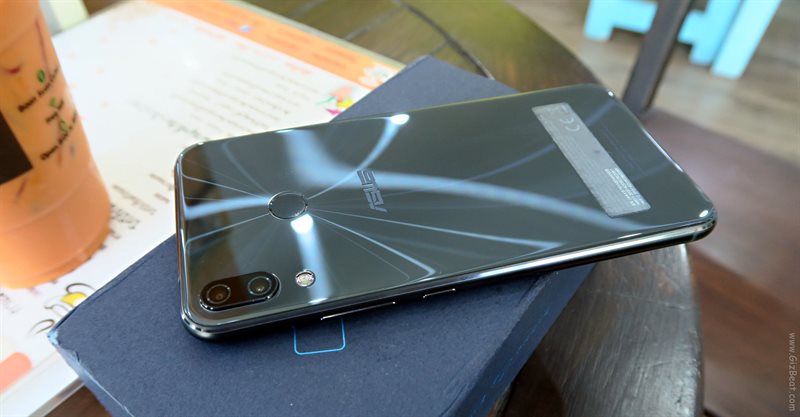 Conclusion
Conclusion
I really like Asus Zenfone 5 ZE620KL. The cameras are very good, the sound quality is excellent, the display is beautiful, updates come regularly, and it carries a lot of flagship technologies but at half the price of other flagships.
An excellent bonus and perhaps even a deal-maker for some is the SD slot which isn’t normally included in flagship phones and which allows us to expand storage up to 2TB.
Zenfone 5 bridges the gap between prohibitively expensive flagships and budget mobiles and comes recommended by GizBeat.


